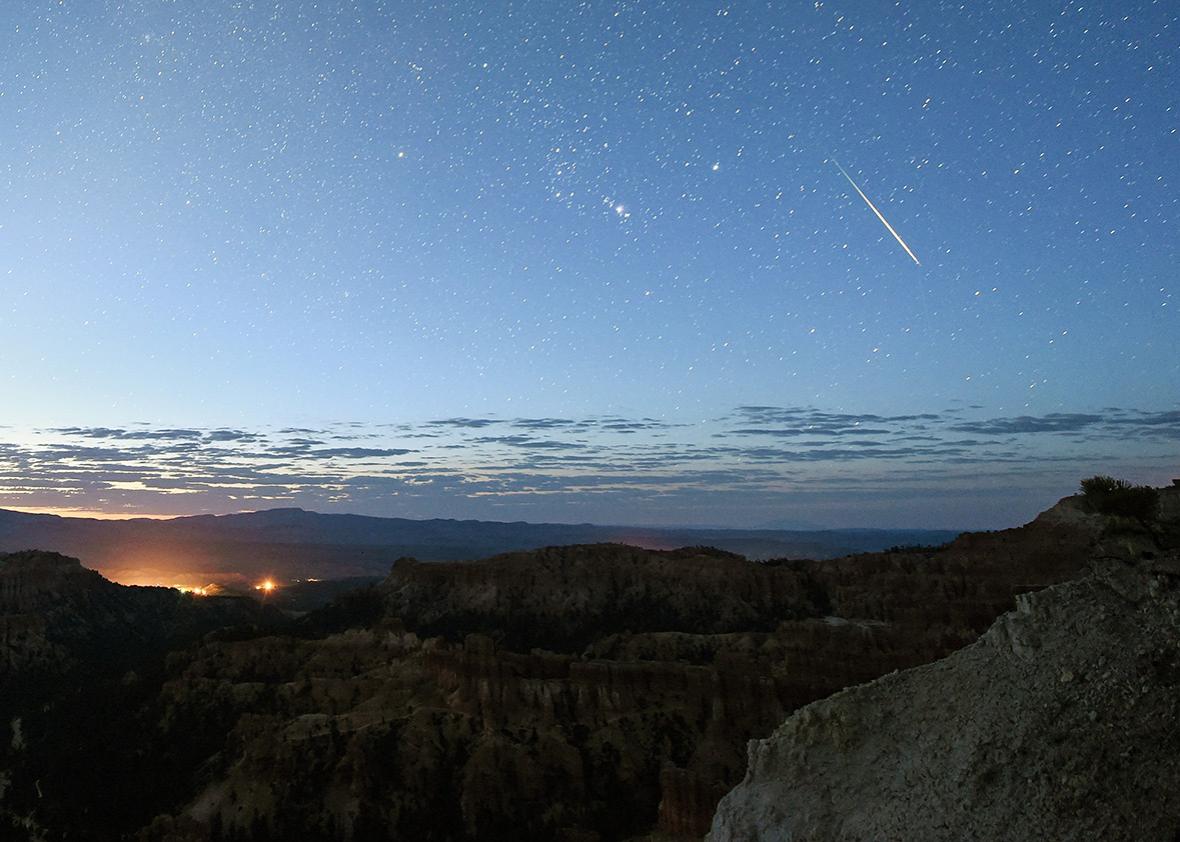Perhaps in recognition of how dire things have gotten down here on earth, space has been putting on quite a show lately. Last night Uranus lit up the night sky, bigger and brighter than it has looked in some time. And this weekend, we’re going to get a meteor shower.
Friday night (Oct. 20), the annual Orionid meteor shower will hit its peak. Rock and ice debris will splinter off the famous Halley’s Comet and burn up in Earth’s atmosphere, with the brightest and most intense hours of the light show occurring just before dawn on Saturday.
The Orionids isn’t the greatest meteor shower to behold—the Perseids back in August and the upcoming Geminids in December are more notable for 2017—but this year is particularly good for watching the Orionids. The moon, in a waning phase, will be a bare sliver in the sky and should be largely invisible for most of the night. That creates a particularly dark sky, excellent for watching shooting stars torch up the black screen above.
The Orionids are named after the constellation Orion, and, as you might have guessed, the best place to look for the shower is around that constellation, which should rise above the eastern horizon after 11 p.m. local time. From 2 a.m. until sunrise, when the meteor shower will be at its most peak, you should be able to spot the constellation high in the south-southeastern sky. The shower will be particularly concentrated above Betelgeuse, the second-brightest star in Orion, which comprises the Mighty Hunter’s left shoulder.
During peak hours, you should be able to spot 15 to 30 shooting stars every hour. Because the Orionids are a more muted spectacle, rural and suburban areas with limited light pollution are the best places to watch the meteor shower. City dwellers will have a difficult time seeing anything but the brightest scorches of light. And regardless of where you are, you’ll need to pay very close attention: The Orionids are among the fastest meteor showers, racing through the sky at about over 147,600 mph. Blink and you’ll miss them.
The Orionids run through Oct. 26, so even if you miss Friday night’s peak, you might still have a chance to watch the stragglers burn through the night for a few more days.
